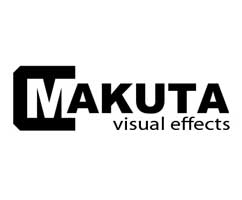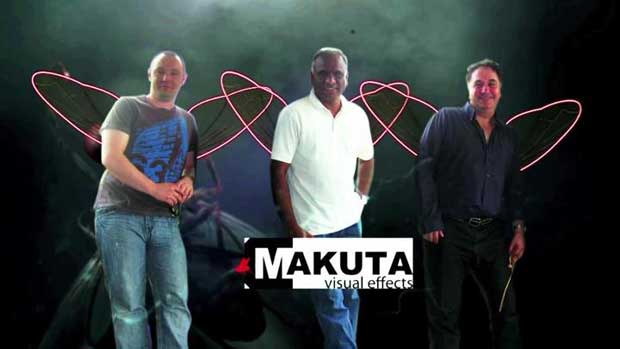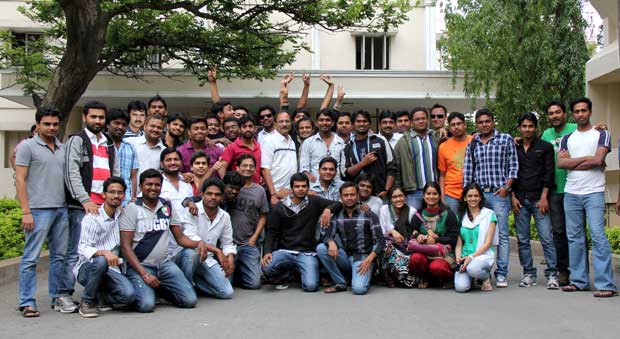 How “Makuta” became the only choice for Mr. Rajamouli’s dream Project “Eega”?
How “Makuta” became the only choice for Mr. Rajamouli’s dream Project “Eega”?
I would like to say that we had a good rapport with the director on his last two features; therefore we were his initial point of call. Initially, he narrated the treatment to us and queried if it were possible and only after much deliberation did we confirm it would be possible, however suggested that it would be a lot of work and would need to be planned meticulously.
Can you tell us about the effort that was put behind the visualization of Eega initially?
The Eega character went through several design revisions, from initial sketches through to models, however the Director would not sign off on any design until he had seen it in one full sequence. After progressing through the second design stage we proceeded to animate the character in one scene that was edited at that time. However upon screening it became apparent that the design wasn’t working. It wasn’t until late on in 2011 that the model design itself was finalized after additional revisions and in early 2012 the materials and shaders locked after several further revisions for those. This meant that with a deadline that was initially fixed for the first quarter of 2012 we had very little time to render and composite the final locked design, however animation had already began some time earlier on a previous rig. As a result, we lit, rendered and composited every single shot containing the fly since January – in only six months.

Did you ever get the thought whether the movie would do well at the Indian box office?
We have an old phrase which is “the proof of the pudding is in the eating”, which means that even though we may feel a feature will do well, it all depends on how the audience receives it and if they can empathize and connect with the character; how he was feeling – if they felt that too. If that could be achieved, then we as “virtual actors” had done our job with the performance. Obviously the film had a “package” which is common in Indian Cinema, however without a “hero” (as such) to last throughout the entire film (obviously Nani is killed off relatively early) to spearhead the film, a lot was going on the reputation of the Director. We had to seriously step up to the mark to make sure that our guy was just as good as any other hero. This is where the big grey area was – could a CG character carry a film as well as any hero? Until this morning – I am writing this on the day of the release – I was still not 100% sure and had a very sleepless night.
Please tell us about the Post production work?
The entire process had to be built in such a way that it would assist the Director in visualizing the character’s performance almost immediately after shooting, something we coined as “post-previz” so that everything was fresh in everyone’s minds and that we could utilize the Director’s time as efficiently as possible. This, in essence, involved two of our animators following him around 24/7 and blocking animation on telecine outputs that had been roughly edited on-set. They pretty much slept with their Macbooks. This then allowed editing to be streamlined and these resulting animation blocks to be used as definitive reference, for the most-part, for the animators back at the studio. The Eega model was built and shaded in 3ds Max however the majority of animators available to us in India were Maya based. Therefore as our rendering pipeline was pretty much set, a pipeline process was designed to port the model to Maya, rig it thanks to the expertise of Vitaly Udenkov who we brought across from Russia, then bring back to 3ds Max for rendering. We also had 3ds Max animators elsewhere in the world (our Persian team) so a rig was constructed for their use and modified to be used in-house as-well thanks to Greg Weiss who we brought across from Germany who not only fixed the Max rig but also animated the entire Fly Birth and Trench episodes and designed additional workflow tools to assist in the pipeline conversion process. Once the next set of animations were produced the model went through this conversion process to pipe the 3D data from Maya, in which most of the animation work was produced, into 3ds Max for lighting and rendering along with props the modelling department created and any assets the effects department produced. Numerous passes of the fly and all of its interacting elements were output, from ID passes through to Z-Depth which was then checked internally within the lighting department and then passed to compositing for final assembly. To remove that “CG Feel” that you tend to get with a lot of shots, we introduced chromatic aberration, depth of field, bokeh, grain, thought about live action camera grips to get the same motion, positioning and variables even when we were in the fly’s world so shots would appear “logical”. We also added a tracked handheld camera node in post; standard “camera shake” processes which are included in most compositing software don’t tend to yield an effective result – they look too repetitive, plus baking this handheld shake in the 3D camera was destructive: once it was in, it couldn’t be removed after rendering without some considerable work. I therefore filmed a lens grid with my phone by trying to hold it as still as possible and keep a central point fixed. This, after 2D tracking, generated an analogue shake, and few position glitches which gave the shot a whole new life even if the camera was moving or static; it could be intensified or decreased as necessary. Sometimes the simplest solutions are the most effective. The audience doesn’t necessarily notice the fact that something like this is there, but they would feel that something wasn’t right if it wasn’t. Every live-action shot has camera shake even if it is locked off of a tripod – the DoP will have his hand on the camera or his eye on the eyepiece, you’ll get small vibrations from crew moving around and so-on. He will possibly even reframe a little.

Tell us about the most complex shots in Eega and how much time did you take to complete it?
There are so many it is difficult to pinpoint a specific one. I would suggest the Trench episode was one of the most complex sequences due to the amount of geometry present in the scene. To keep the systems from falling over, the majority of the scene was baked out to proxies so they could be duplicated thousands of times to create numerous high-detailed rocks – totalling over five billion polygons if the scene was rendered as geometry; baking out allowed us to instance a lot of the information which kept the memory overhead low and allowed for the detail level to be increased dramatically without the systems exploding. Even then, some systems were failing with the amount of information having to be transferred between nodes. However if you ask another department they will say something different. In the montage sequence, the fly gets coated in blood and the Heroine showers him down by squirting water on him with a syringe. Not as easy as it sounds as you have got two fluids which need to blend together, plus effectively spray outwards and look, well, heroic. Numerous simulations were done to get this finalised with the effects artists busting their heads daily to get the best result. I think it came out awesome – its not to scale, yet this is intentional to get a dramatic result.
Could you tell us about the International production houses or artists who had contributed?
Makuta allocated and oversaw several studios contributions. This consisted of several local studios and artists and a few based overseas. One primary studio – Ulitka Post, based out of Russia (“Wanted”) handled the Mantric episode plus a few additional shots within the rest of the feature, all under our quality control and Director’s instruction. Additional suppliers worldwide were contracted as technical specialists, i.e. artists who we needed to bring on board to work with us to contribute their expertise to shots, such as fire dynamics and animation rigging; we had artists from the US, Germany, the UK, Ukraine and Russia contributing to sequences. We also pulled in external tutors, namely Ed Hooks (Acting for Animators) who held workshops with our in-house animators to ensure quality performance.
After Makuta contributing 85% what are the other companies who have supported?
In addition to Makuta’s contribution, again, we oversaw the additional suppliers who were numerous, ranging from Ulitka (Russia), individual specialists in Germany, Russia and the USA who performed remotely or were brought in-house for a period, along with local companies in the south such as EFX, Mayans Creatives, Pixion, Mind Visions, Digiquest, Mirage, Ethnic Creative Studio, VAC, Vensat and Laughing Dots amongst others. Some provided compositing services while others animation with some providing entire complete sequences utilising our assets. Some also worked with us in-house during crunch time when we needed to ensure that any corrections were done efficiently and/or to utilise our 100+ node render farm. In regards to this R.C. Kamalakannan has played a vital role in co-coordinating with all the companies, followed by Sunil Akula.
Everyone is saying Eega is the first Indian movie with such a huge sophistication in Animation & VFX – What do you have to say about that?
Without blowing our own trumpet exceptionally loudly, I would have to agree. With the amount of shots present in the film I do not know of any other studio in the country which would have been able to produce such a quality of work and who are as dedicated to the task. Everyone put their whole heart and soul into the production of the animation and effects work and we would have expected nothing less than perfection. Hopefully we have set the bar exceptionally high for others to follow and have reiterated our dedication to the art. Some of the best feedback we have been having is from our peers which are especially welcome.
Did you get any negative reviews or remarks while making or at the time of production of the movie?
Naturally the most critical comes from the Director himself, along with us. However you always get negative comments from the most random of people – you have to take the rough with the smooth; this mainly tends to come out when the first-look images are revealed. We got a lot of calls when the first set of posters came out which, I have to say, didn’t really do our guy justice. The people who are the most critical of our work (apart from the Director obviously!) are ourselves; we check every single process and attempt to refine every single frame before it goes out, sacrificing friends, family and social lives to ensure this. The same thing applies with our outside suppliers; we would not accept any shot to go out unless it is as good as we would produce ourselves. We treat the credit roll like an artist signing his or her name on a canvas – this is our signature and we are proud to have created this art.
Any message to the audience and the new creative generation?
I really do hope that people enjoy the film for what it is – a live action feature. Ok our lead protagonist is an animated character, however the audience should not perceive this and simply enjoy his performance and the thrill of the ride. For anyone who is looking to get into this line of work, my best suggestion is “if you don’t 110% enjoy it, don’t do it”. Else you will be miserable when you are working for 48 hours straight without any sleep pushing for that ever approaching delivery date…
What are your future plans in promoting MAKUTA INDIA wide at the corporate sector?
Due to the success of Eega we intend to capitalise on this to show not just locally or nationally but also internationally what a studio in India can do. We intend to hit the road pretty hard to showcase the work we have done and our aspirations for the industry as a whole in the very near future.
EEGA is a big hit in INDIA, truly International, so are there any plans to release in English for westerns. And also hearing from Mr. Suresh Babu of re-releasing EEGA in 3D version as well.
I can’t comment on production decisions until they have been officially announced by them. That ball is in their court and it’s their call entirely as to what they want to do with any potential franchise.
What is the team strength of Makuta in numbers
We are currently running about 50+ artists based out of Hyderabad which range from generalists through to specialists in animation, effects, lighting, compositing etc. We aim, above all else, to focus on high-end effects and animation work – it has taken some time to get to this stage purely because we are choosy as to whom we bring on board. However we are still growing as a company and in numbers. An approach that I take to train artists only goes so far – there has been a cultural barrier which we have overcome both for the local artists and for me as-well. It shouldn’t be stated “how you managed in getting fine quality from Indian Artists”; that it is an acceptance of defeat – or “we know it’s not going to be good anyway so let’s not try”. Unfortunately this is a preconception that travels too well and it shouldn’t. An artist is an artist, no matter where you come from. You should just have that need to do the art – that is half of the work done right there. The rest is motivation, self-discipline, self-learning and team interaction; but above all, communication between artists and departments.
connect@animationxpress.com
